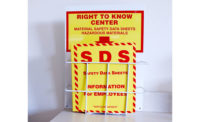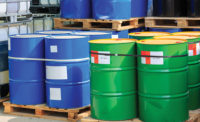Today’s workplaces look far different than they have in the past, taking on many shapes, sizes and settings ranging from small, family-owned businesses to companies with thousands of workers on sites spread across the country. As a result, more workers from multiple employers are working side-by-side at the same locations, increasing the shared responsibility for worker safety among employers.
Onsite chemicals create more confusion over who has obligations under OSHA’s Hazard Communication (Hazcom) Standard. Complicating the situation even more is the lack of guidance surrounding this subject. Many resources available only discuss simple employer-employee relationships as if the modern-day realities of multi-employer worksites don’t exist.
Following is an overview of OSHA’s multi-employer worksite requirements, and practical guidance on Hazcom compliance when more than one employer is involved.
General employer responsibilities
Before diving into multi-employer worksites, it’s important to first have a solid understanding of general employer responsibilities under the Hazcom Standard.
OSHA’s 29 CFR 1910.1200(b)(1) requires all employers to provide information to their employees about the hazardous chemicals to which they are exposed with a written and site-specific Hazcom plan, containing a current chemical inventory list, systems for labeling of containers and other forms of warning, training, and access to safety data sheets (SDSs) for all hazardous chemicals in the workplace. These requirements are intended to ensure that all workers understand what chemicals are present and how to safely work with them.
That last point is key for multi-employer worksites; while it’s easy to focus on “who has to do what,” this isn’t a productive approach. Your goal should be to ensure that all employees at a worksite have access to hazard information, whether they’re your own employees or another employer’s, regardless of whether the chemicals in question are “yours” or “theirs.”
Developing a written Hazcom plan
OSHA addresses requirements for multi-employer worksites in 29 CFR 1910.1200(e)(2), stating that employers who produce, use or store hazardous chemicals at a workplace in ways that could result in exposures to employees of other employers must address those hazards in their written HazCom plan.
The standard requires these employers to include a number of specific things in their written Hazcom plans, including:
- Methods the employer will use to provide other employer(s) on-site access to SDSs for each hazardous chemical that other employer(s)’ employees may be exposed to;
- Methods the employer will use to inform the other employer(s) of any precautionary measures that need to be taken to protect employees during the workplace’s normal operating conditions, and in foreseeable emergencies; and
- Methods the employer will use to inform other employer(s) of the labeling systems used in the workplace.
While 29 CFR 1910.1200(e)(3) states that you can rely on an existing Hazcom plan — such as one from another employer — to meet these requirements, it must meet all the requirements under paragraph (e) of the standard. Additionally, your written plan must spell out the reliance on the other employer’s program.
Even if your own operations don’t involve the use of hazardous chemicals, you still have Hazcom obligations if your employees enter a multi-employer worksite and are exposed to another employer’s chemicals.
Implementing worker training
Training is the glue that holds Hazcom programs at multi-employer work sites together. As a general rule, each employer is responsible for providing training on the hazards under their own control for the chemicals associated with their operations.
Each employer should take a look at the requirements for training in the Hazcom standard at 1910.1200 (h), which states that every employer subject to the standard must provide information and training to their workers that includes, at a minimum:
- The requirements of the Hazcom standard;
- Operations in their work areas where hazardous chemicals are present;
- The location and availability of the written Hazcom plan, and specific details of the plan for workplace Hazcom management, including the workplace labeling system, methods of providing SDS access, and where/how employees can obtain appropriate hazard information;
- Methods and observations that may be used to detect the presence of a hazardous chemical;
- The physical and health hazards, including simple asphyxiants, combustible dusts, and pyrophoric gases, as well as hazards not otherwise classified, of the chemicals in the work area;
- And the measures employees can take to protect themselves from these hazards.
Notice that some of the key training requirements pertain to the location and contents of the written Hazcom plan, which is not surprising given that this plan is essentially a “playbook” for Hazcom management. Whenever you change important aspects of chemical safety or Hazcom management, such as introducing a new hazard class of chemicals, you must not only update your written plan but also retrain your workers. And you must also do so even when these hazards are created by other employers.
Ensuring all workers have access to SDSs
Another important element to multi-employer worksite safety and Hazcom compliance is making sure all workers have quick and easy access to SDSs for all the hazardous chemicals they are exposed to.
The employer of workers at another worksite can rely on the SDSs that the host employer provides so long as that information is provided in both parties’ written plans. A simple solution for multi-employer workplaces is to provide each other with copies of SDSs or to add your SDSs to their collection, as long as your employees have access.
Remember the goal is ultimately to protect all workers in the worksite.



